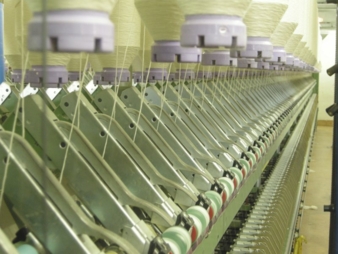13/02/2019 – Japan — auf Deutsch lesen
Japan Cotton Situation in 2017/18
The Japanese economy continues a moderate recovery, due to improvement of employment and income. However, the cotton goods market has been on a downward trend, affected by declining birthrate and aging society, weaker personal consumption and decreasing population.
In the face of this general situation of the economy, Japan’s textile industry has been slow with shrinking of domestic demand for textile goods resulting from sluggish per capita consumption which has been persisting for the past several years.
In 2017, the production of the cotton yarn decreased by 3 percent to 33.2 thousand tons in Japan, while the imports of cotton goods into Japan declined by 2 percent to 554.1 thousand tons (Cotton Yarn, Fabrics and Made-up Goods). This means that total 587.3 thousand tons of cotton goods (in yarn volume equivalent) were supplied to the Japanese market with a great majority consumed domestically.
On the other hand, the domestic spinning capacity of all types in 2017 totaled 886 thousand spindles, marginally below the previous year. Japanese spinners continue relocating their spinning capacities to overseas joint-venture textile mills. As a result, the Japanese cotton industry has been declining in size year by year.
Cotton Imports
Despite higher cotton prices, cotton imports into Japan in 2017/18 totaled 225,300 bales (55,585 MT), up 6.5 percent from 239,600 bales (52,166 MT) in 2016/17, overcoming a difficult previous year of decreased consumption and buying returned. The main sources of supply were the United States, followed by Australia, Greece and Brazil. U.S. cotton imports used mainly for spinning medium count yarn rose by 14 percent to 126,000 bales (27,433 MT), accounting for 49 percent of total imports and remains the largest supplier. Greek cotton used for spinning coarse count yarn increased by 9 percent to 31,000 bales (6,749 MT), turning to increase again. Similarly, Brazilian cotton for coarse count yarn production rose to 24,000 bales (5,225 MT), up 24 percent from a year ago. In contrast, Australian cotton decreased to 54,000 bales (11,757 MT), down 11 percent from last season. Despite having less contamination and longer staple, the decrease results from its rather expensive prices.
The United States, Australia, Greece and Brazil account for over 90 percent of total imports of Japan in recent years, which suggest that oligopoly is on the rise. For 2017/18, these top four countries accounted for 92 percent.
Cotton Consumption
In the wake of World War II, Japan’s textile sector grew quickly over the next several decades, alongside many other industries, but later entered into a decline. At its peak, Japan’s spinning sector represented 6 percent of world consumption, but in recent seasons represents less than half of a percent of that total. Mill use in Japan has leveled to around 250,000 bales (54,430 MT) in recent years; the 2017/18 remains unchanged.
Source: The Japan Cotton Traders Association
Excerpt from Bremen Cotton Report No. 05/06 – Februrary 7th, 2019
For more information www.baumwollboerse.de/en




